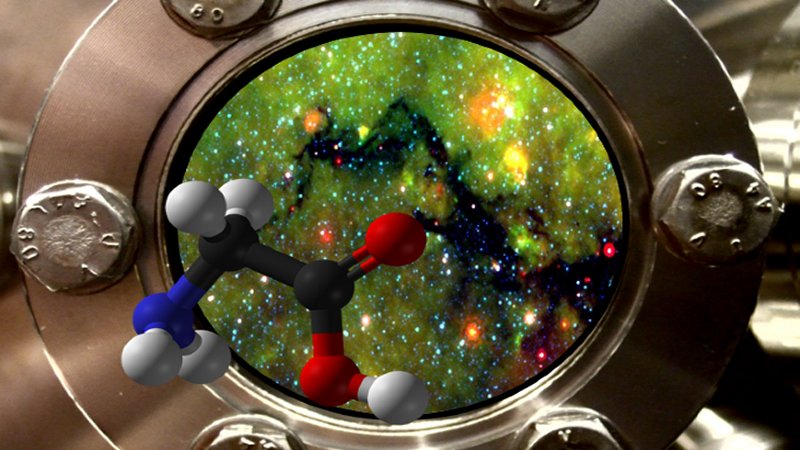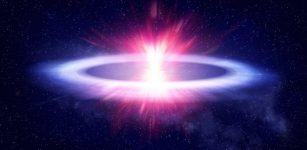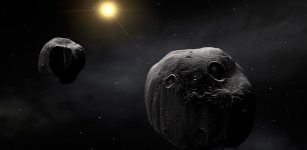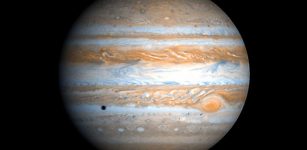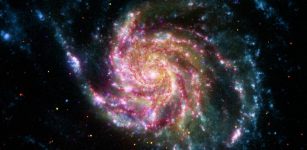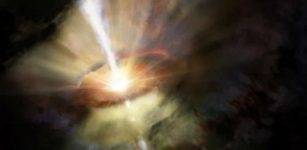5 Beautiful Nebulae – Among The Most Amazing Astronomical Objects In The Night Sky
MessageToEagle.com – Nebulae are among the most beautiful astronomical objects in the night sky .
They are glowing with beautiful colors and swirls of light. They are rich and powerful stellar nurseries where huge clouds of dust and gas collapse to form the next generation of stars, the basic building blocks of the Universe.
The intense ultraviolet light from the newly formed stars inside these immense clouds, illuminate the nebula making it vividly colourful – in beautiful reds, blues and greens. These colors are the result of different elements within the nebula.
Most nebulae are composed of about 90% hydrogen, 10% helium, and 0.1% heavy elements such as carbon, nitrogen, magnesium, potassium, calcium, iron.
These clouds of matter are also quite huge. In fact, they are among the largest objects in the galaxy. Many of them are dozens or even hundreds of light-years across.
Cat’s Eye Nebula
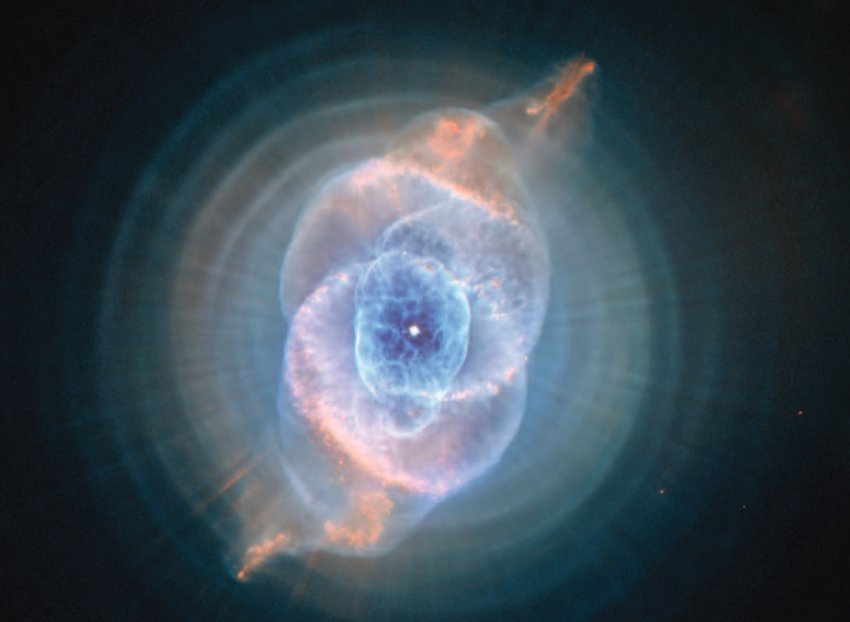
The Cat’s Eye Nebula was one of the first planetary nebulae to be discovered. It is also one of the most complex planetary nebulae known. It was discovered by William Hershel in 1786, formed by a dying star originally about five times the mass of the Sun.
This beautiful interstellar cloud is located approximately 3,300 light-years from Earth and it can be found in in the constellation Draco, in the Northern Hemisphere.
Cat’s Eye Nebula formed when the star lost its outer envelope of material and it happened around 1,000 years ago.
Observations suggest the star ejected its mass in a series of pulses at 1,500-year intervals.
The Crab Nebula
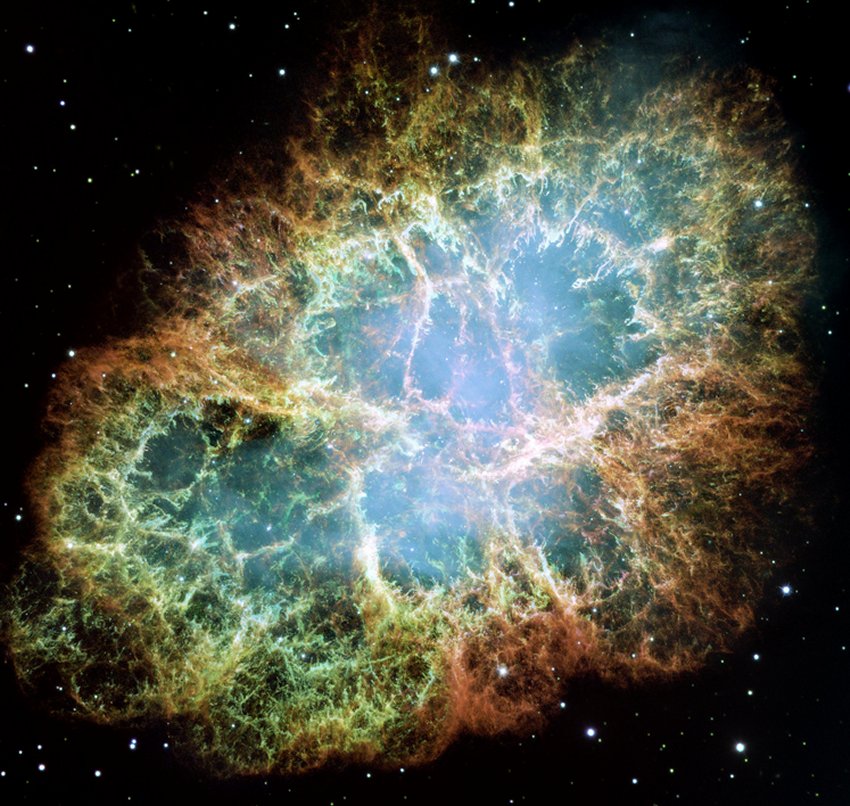
The Crab Nebula, one of the most studied objects in space, depicts the remains of a star that exploded as a supernova nearly a thousand years ago.
The result of a supernova was noted by Earth-bound chroniclers in 1054 A.D. It’s filled with mysterious filaments that are are not only tremendously complex, but appear to have less mass than expelled in the original supernova and a higher speed than expected from a free explosion.
The Crab Nebula spans about 10 light-years. In the nebula’s very center lies a pulsar: a neutron star as massive as the Sun but with only the size of a small town. The Crab Pulsar rotates about 30 times each second.
Eskimo Nebula
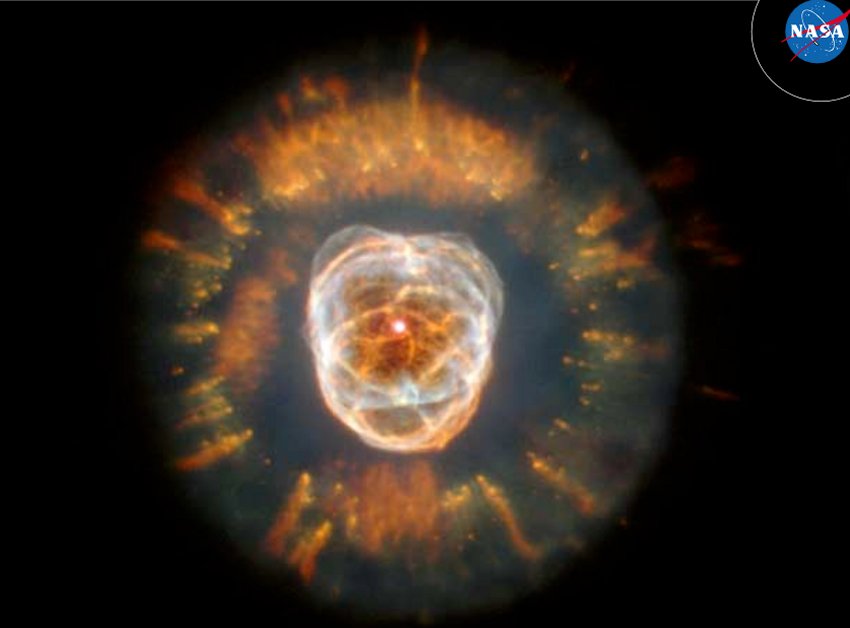
In 1787, astronomer William Herschel discovered the Eskimo Nebula, which from the ground resembles a person’s head surrounded by a parka hood. In 2000, the Hubble Space Telescope imaged the nebula that displays gas clouds so complex they are not fully understood.
The Eskimo Nebula is clearly a planetary nebula, and the gas seen above composed the outer layers of a sun-like star only 10,000 years ago.
The inner filaments visible above are being ejected by strong wind of particles from the central star. The outer disk contains unusual light-year long orange filaments.
Helix Nebula
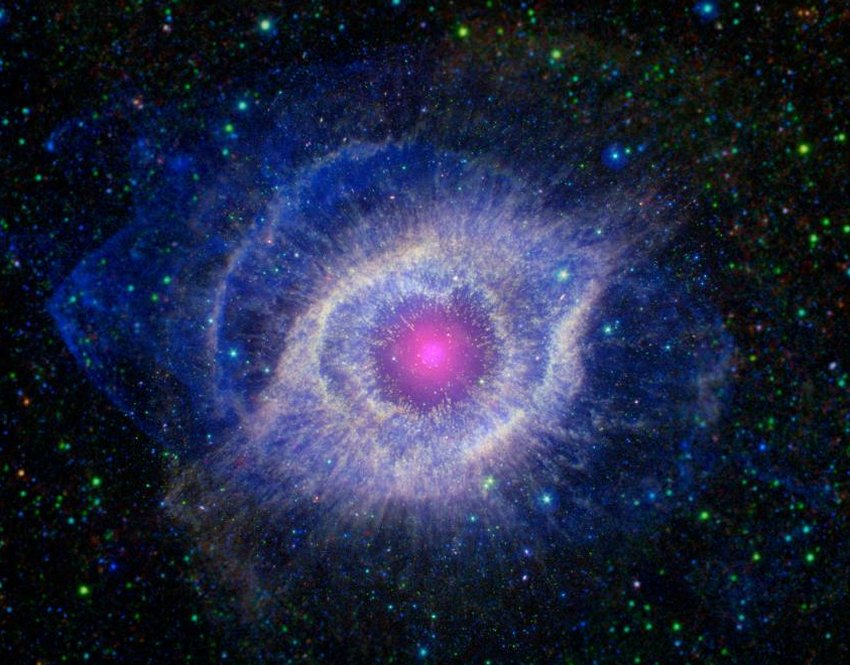
This is the colorful end of a star’s life. The Helix is an example of a planetary nebula, the expanding shell of glowing gas around a dying, Sun-like star.
The Helix, located 650 light-years away in the constellation of Aquarius, is one of the closest planetary nebulae to Earth.
This glowing gas cloud appears very large in the sky: Its apparent size is about half the diameter of the full moon.
The Helix’s actual diameter is about 2.5 light-years.) In fact, the nebula is so large that astronomers using the Hubble telescope couldn’t squeeze the entire nebula into one or even two snapshots!
The Butterfly Nebula
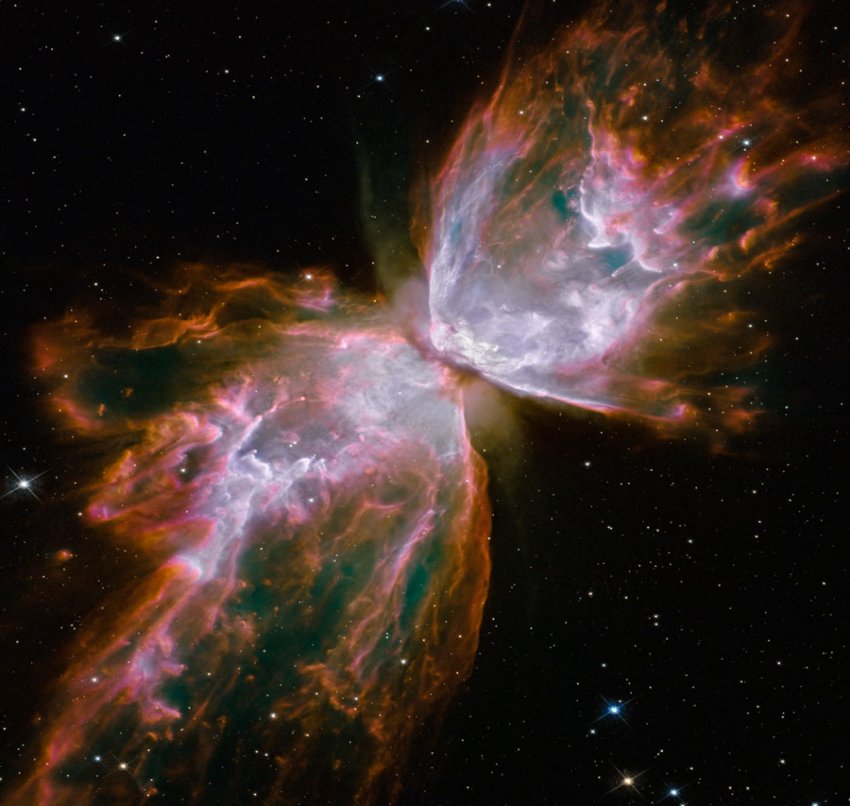
These are the glowing remains of a dying star that was about five times the mass of the Sun. The glowing gas is the star’s outer layers, expelled about 2,200 years ago.
The structure in the nebula is among the most complex ever observed in planetary nebulae.
The “butterfly” stretches for more than two light-years, which is about half the distance from the Sun to the nearest star, Alpha Centauri.
NGC 6302 also known as or the Bug Nebula, lies about 4,000 light-years away in the constellation Scorpius. This dying star’s nebula has an estimated surface temperature of about 250,000 degrees C.
Copyright © MessageToEagle.com. All rights reserved. This material may not be published, broadcast, rewritten or redistributed in whole or part without the express written permission of MessageToEagle.com.
source: NASA


